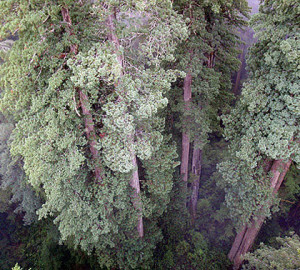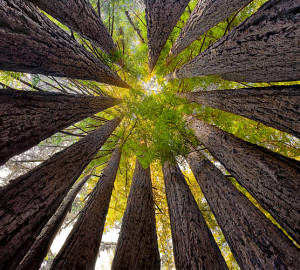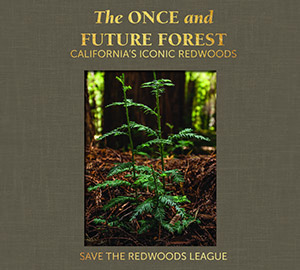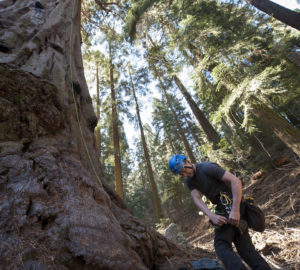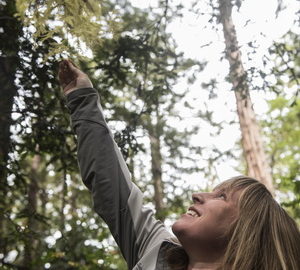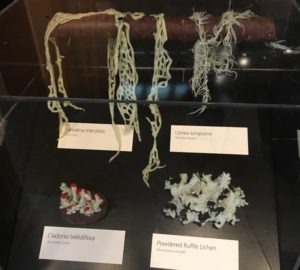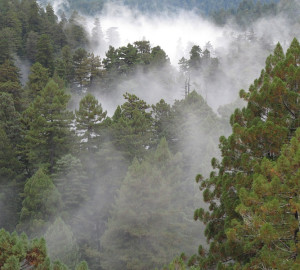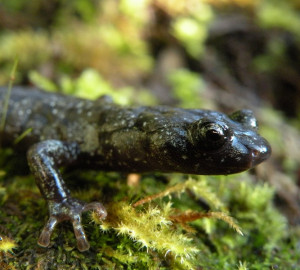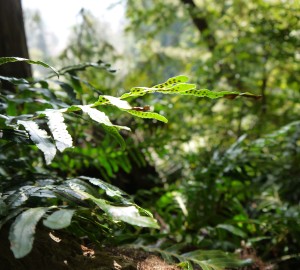For centuries, people have admired the sheer size of redwood trunks and appreciated the bounty of ferns and sorrel that carpet the forest floor. We have cherished the rare silence that envelopes the trees and relished in the beauty of sunlight filtering through the underside of the canopy. Yet, the intricate world at the top of the trees remained a mystery until the late twentieth century, with the advent of canopy exploration.
Last week, Save the Redwoods League held an annual thank you event for our Redwood Leadership Circle and Redwood Legacy Circle members. Hosted by the California Academy of Sciences, this year’s event explored Forest Canopies of the World with two pioneers at the forefront of canopy research in the world’s tallest and most biodiverse forests. Dr. Emily Burns, the League’s former Director of Science and an expert in the physiological influence of climate change on coast redwood forests, interviewed Dr. Margaret D. Lowman, the Director of Global Initiatives at Cal Academy, who has pioneered treetop exploration for over 30 years.
The passion that Emily and “Canopy Meg” share for science was palpable in the room as they discussed the plant and animal life that abounds in the canopy. To explore this previously inaccessible world, “Canopy Meg” has designed hot-air balloons and canopy walkways that now give forest lovers around the world the opportunity to experience the forest from the tops of the trees.
Like coral reefs, forest canopies are great reservoirs of biodiversity, where plants, animals, and lichen coexist in a delicate balance amidst the changing conditions of our planet. Canopies of old growth forests are exceptionally rich in epiphytes, plants that grow harmlessly off of trees. A single bromeliad in a tropical canopy harbors thousands of little critters, and epiphytic leather leaf ferns (Polypodium scouleri) in the upper branches of redwoods create lush fern mats that provide habitat for salamanders and a diversity array of life.
At a time when more species are facing extinction than ever before, we have the unique responsibility to protect and enrich what remains. As Emily says, people are the solution. People can save the great myriad of life that the forest supports.
Save the Redwoods League thanks our Redwood Leadership Circle and Redwood Legacy Circle donors for their generous support of the redwood forest and the incredible array of life that depends on it.
The Redwood Leadership Circle honors Save the Redwoods League’s most generous members who make annual gifts of $1,000 or more with special recognition and events in appreciation for their critical role in protecting the redwood forest.
The Redwood Legacy Circle includes our members who have created a living legacy by naming the League in their wills, trusts, or other estate plans. Through their thoughtful generosity and foresight, these members are ensuring the future of our magnificent redwood forests.
